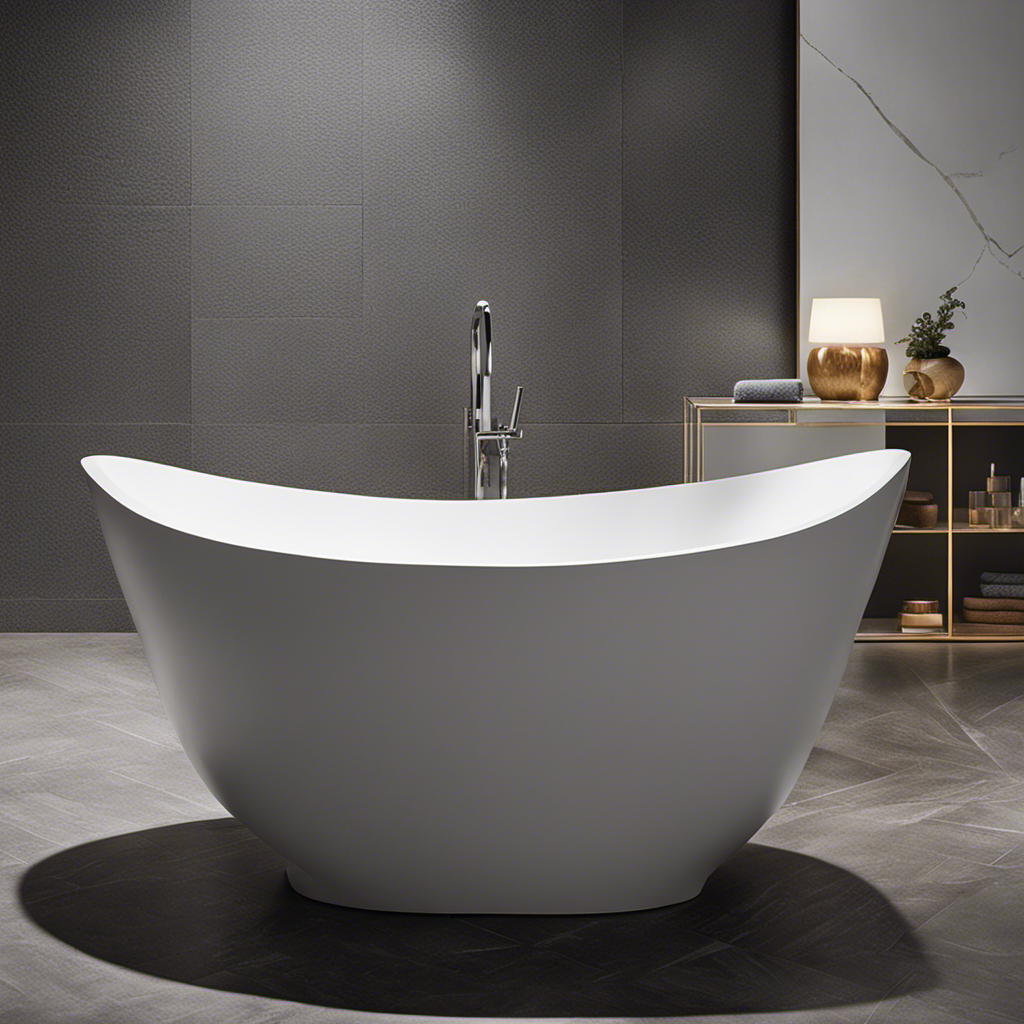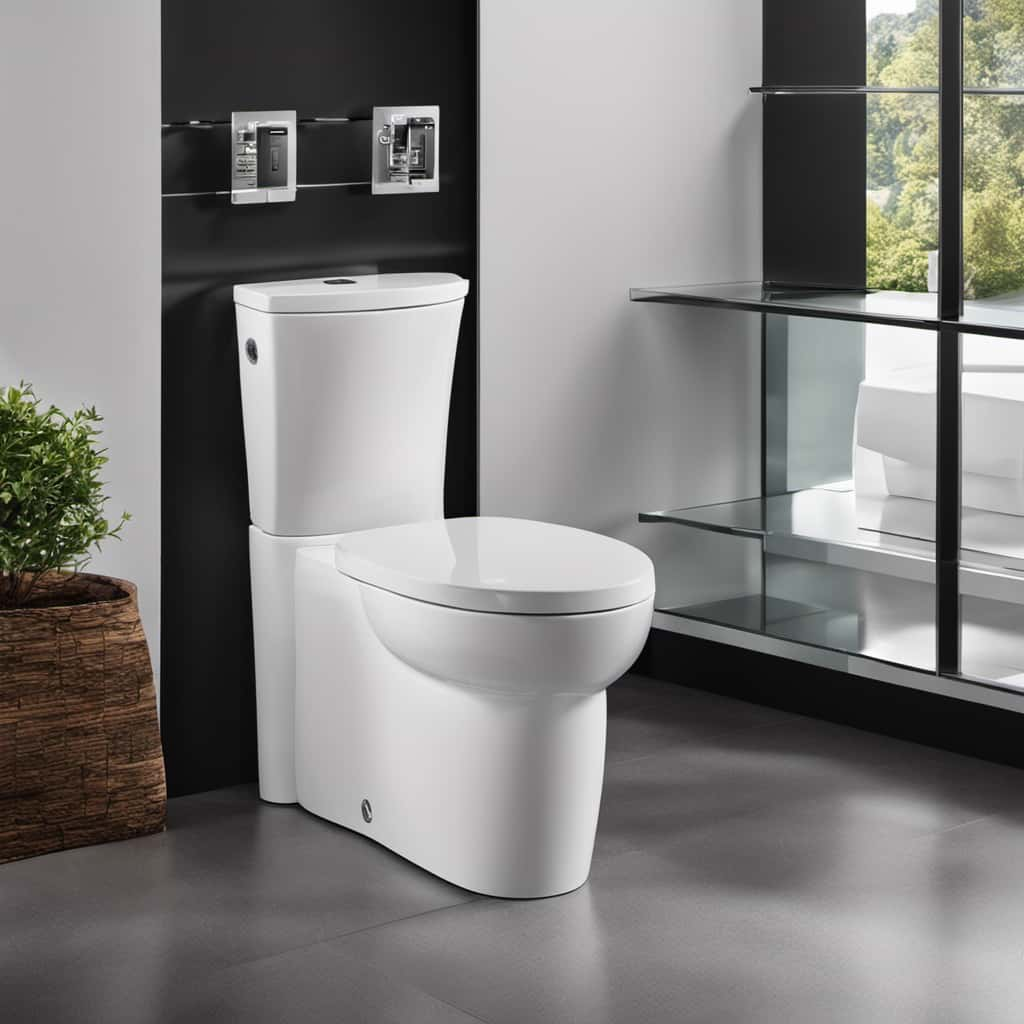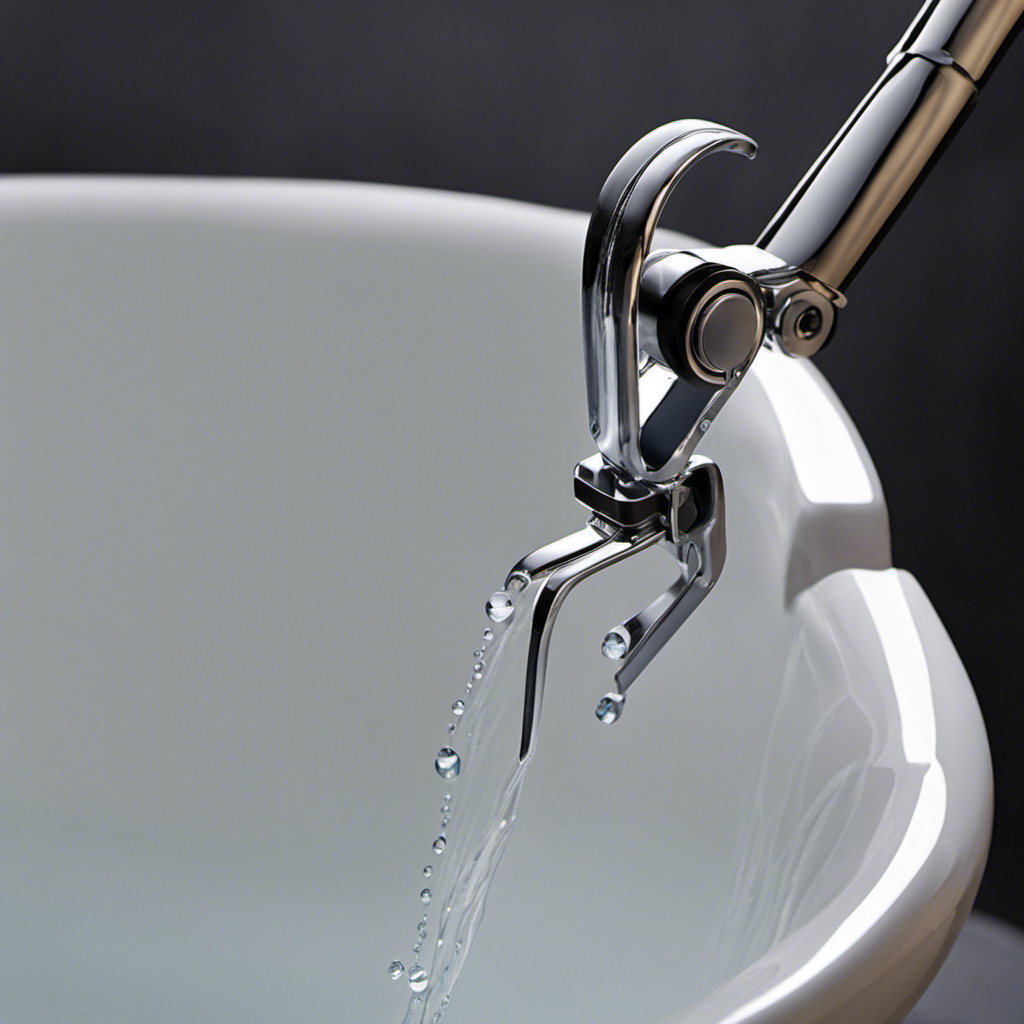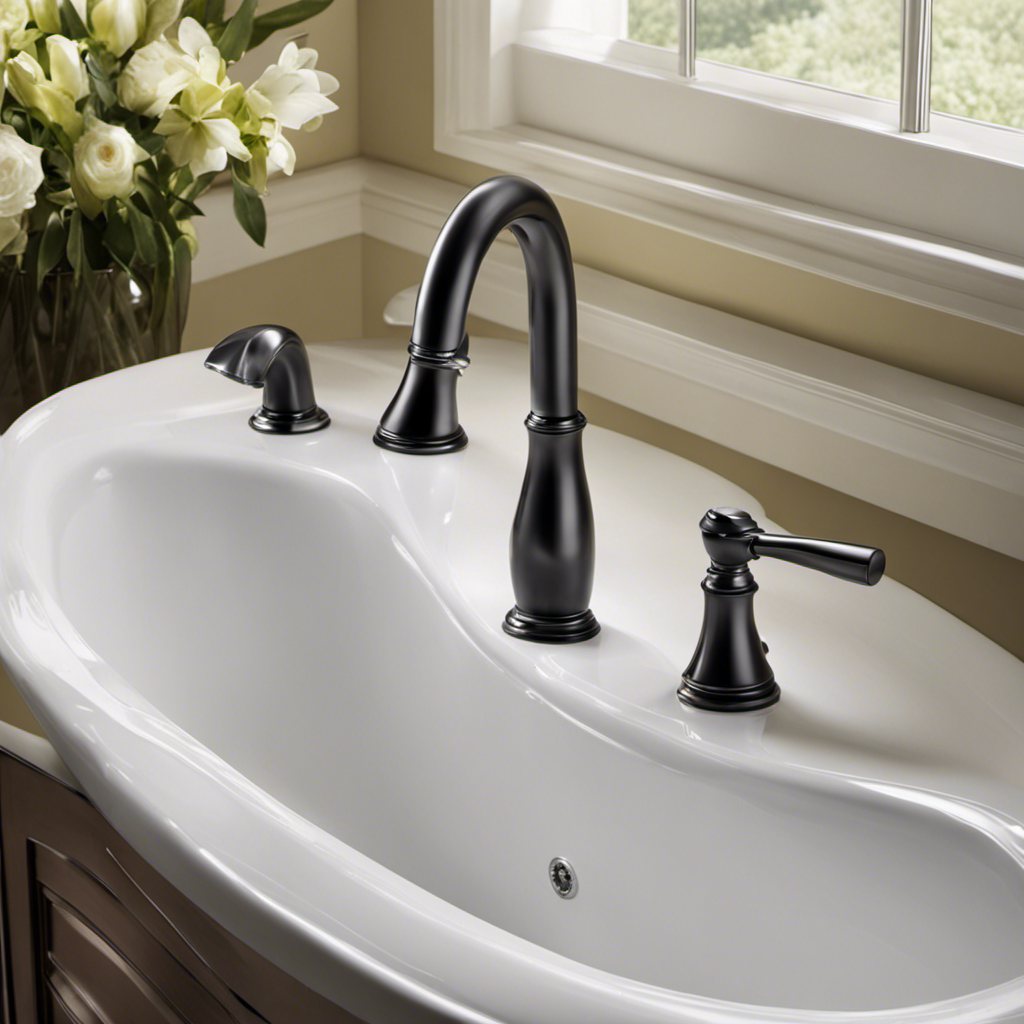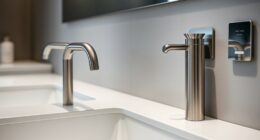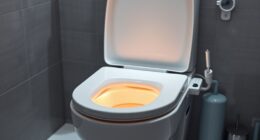Have you ever stepped into your bathtub, expecting a nice hot soak, only to be greeted by icy cold water? It’s a frustrating experience that can ruin your relaxation time.
But fear not, because in this article, I’ll guide you through the common causes of cold bathtub water and provide you with troubleshooting steps to fix the issue.
So, grab your rubber ducky and let’s dive into the world of hot water mysteries together!
Key Takeaways
- Common causes of cold bathtub water include malfunctioning water heater, accumulation of sediment in the water heater tank, faulty heating element, and faulty thermostat.
- Checking and adjusting the water heater thermostat setting is important to ensure safe and comfortable water temperature.
- Regular water heater maintenance, including periodic checks for sediment buildup, is crucial for maintaining proper functioning and efficiency of the water heater.
- Plumbing issues, such as lack of maintenance, sediment buildup, and heat loss from uninsulated pipes and tank, can affect the hot water supply and bathtub temperature.
Common Causes of Cold Bathtub Water
One common cause of cold bathtub water is a malfunctioning water heater. Proper water heater maintenance is essential to ensure hot water is consistently available. Over time, sediment can accumulate at the bottom of the tank, reducing its efficiency and causing water to heat up slower. Regular flushing and cleaning of the water heater can prevent this issue.
Another cause could be a faulty heating element or thermostat, which can result in inadequate heating or no hot water at all. In such cases, it is advisable to hire a professional plumber who can accurately diagnose and fix the problem.
By addressing these common issues through proactive water heater maintenance or professional assistance, you can ensure a steady supply of hot water and avoid the inconvenience of cold bathtub water.
Now, let’s move on to checking the water heater temperature.
Checking the Water Heater Temperature
To check the water heater temperature, you can simply adjust the thermostat setting. The thermostat controls the temperature of the water in the tank, and by adjusting it, you can ensure that the water is heated to the desired temperature. It is important to note that the temperature setting should be safe and comfortable for use. Here is a helpful table to guide you in adjusting the thermostat:
| Temperature Setting | Water Temperature |
|---|---|
| Low | Around 120°F |
| Medium | Around 140°F |
| High | Around 160°F |
In addition to adjusting the thermostat, it is also important to periodically check for sediment buildup in the water heater tank. Sediment buildup can reduce the efficiency of the water heater and affect the temperature of the water. By following these steps, you can ensure that your water heater is functioning properly and providing hot water when needed. Now let’s move on to understanding plumbing issues that can affect hot water.
Understanding Plumbing Issues That Affect Hot Water
Understanding plumbing issues that affect hot water can help homeowners troubleshoot and resolve common problems. Proper water heater maintenance is essential to ensure efficient operation and consistent hot water supply. Regularly flushing the tank to remove sediment buildup and checking the temperature settings are important steps to maintain optimal performance.
Another factor to consider is the importance of insulation. Insulating hot water pipes can minimize heat loss and keep the water hotter for longer periods. Additionally, insulating the water heater tank itself can help reduce standby heat loss.
By addressing these plumbing issues and performing regular maintenance, homeowners can ensure that their hot water system operates effectively and efficiently.
Now, let’s explore the role of water pressure in bathtub temperature.
The Role of Water Pressure in Bathtub Temperature
Make sure you check the water pressure in your bathtub to ensure a consistent and comfortable temperature. The water pressure plays a crucial role in determining the temperature of your bathwater.
Here are some key points to consider:
-
Weather conditions: Extreme weather conditions, such as cold winters or hot summers, can impact the temperature of your water. Cold weather can cause the water to cool down faster, while hot weather can make it harder for the water heater to reach the desired temperature.
-
Regular maintenance: It is essential to regularly maintain your water heater to ensure it functions optimally. Over time, sediment buildup can affect the efficiency of the heater, leading to inconsistent water temperature.
-
Plumbing issues: Any plumbing issues, such as leaks or clogs, can disrupt the water pressure and, consequently, the temperature. Regularly inspect your plumbing system to address any potential problems promptly.
Troubleshooting Steps to Fix Cold Bathtub Water
If you’re experiencing cold water in your bathtub, one troubleshooting step you can take is to check the water heater settings. Start by inspecting the thermostat settings on your water heater. Make sure the temperature is set high enough to provide hot water to your bathtub.
If the thermostat settings are correct, the next step is to check for a faulty heating element. This can cause the water in your bathtub to stay cold or lukewarm. To check for a faulty heating element, turn off the power to the water heater and remove the access panel. Look for any signs of damage or corrosion on the heating element.
If you notice any issues, it may be necessary to replace the heating element to restore hot water to your bathtub.
Conclusion
After exploring the common causes of cold bathtub water and understanding the various plumbing issues and water pressure that can affect the temperature, it is clear that troubleshooting steps are necessary to fix the issue.
Just like a detective unravels a mystery, these steps will lead us to the warm and inviting bath we long for.
By checking the water heater temperature, identifying any plumbing problems, and ensuring proper water pressure, we can ensure that our bathtub water will flow hot, enveloping us in a soothing embrace.

